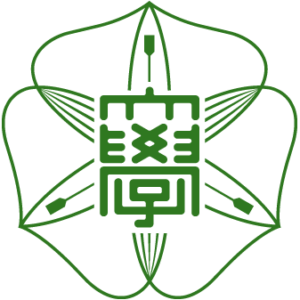
「大学と関連病院の繋がり」
2024年の医局での出来事で大きかったものの 一つが「新トレーニングプログラム」の設立でした。教育のページでも内容を述べていますので、そちらも合わせてお読みいただけますと幸いです。 事の発端は、齋藤先生、董先生、木嶋先生、田川先生と話をしていて、臨床指導医育成プログラム(トレ ーニングプログラム、TP)を希望する人が少ない、混みすぎている専門外来がある、手術待機期間が長すぎる分野がある、臨時手術が多くて疲弊している人が多い、関連病院に比べて大学の仕事量が多すぎるなど多くの問題があり、解決するためには今のシステ ムを大きく改革しなくてはいけないと感じていることを共有できたことでした。特に病棟では白内障機械の自己操作やチーム制による手術決めの導入によって、効率的な手術組みや業務負担の分散化を行いある程度の効果は得られたものの、まだ改善する必要が残っていました。また、これまでも多くの人がTPを受けてきましたが、開業などで退局してしまうため、指導者の数はあまり増えませんでした。専門的な知識と経験に基づいた高度な医療を提供することが求められている大学病院において1~2人の優秀な指導者がいたとしても、患者数が多ければ対応しきれませんし、指導者が辞めるときに後継者が育っていなければその専門分野は途絶えてしまいます。こうならないように先を見据えながら専門分野を習得した医師を育てていくことが医局としての責務です。さらには関連病院にも専門的な治療を行う医師を派遣することで地域医療の充実を図ることも必要だと思います。そのためには、今よりも専門手術を学ぶ機会を増やす、門戸を広げる必要性があると考えました。そこで石田教授に相談したところ、新TPワーキンググループとして新しいプログラム案を作ることの許可をいただきました。
ワ ーキンググループでは、関連病院の医師たちにア ンケートを取りました。そうすると、ほとんどの人たちが専門的な分野の教育を受けたいと考えていることがわかりました。次に、医長会議を開催しました。これまで大学と関連病院の医長が集まって話し合うということがなかったため、画期的な試みだ ったと感じています。第1回会議では大学での問題点を話し、関連病院でできる範囲で協力してほしいというお願いをしたところ、皆快く了解していただきとてもありがたかったです。第2回会議では新TP構想について提案し意見をいただき、その後のスタ ッフ会議で議論した末に作成した新TPルールを第3回会議にて承認していただきました。なお、この会議では各病院でどのような専門治療ができるのか、あるいは今後どのような施設にしていけるのかを話し合うこともでき、とても有意義でした。関連病院の先生方からも、他の病院の様子が知れて良かったという言葉もいただきました。今後も年に1回は開催していく予定です。
出来上がった新TPはワーキンググループメンバーの思いが詰まったプログラムとなっています。石田教授からは、新しい世代がとても良いプログラムを作ってくれて嬉しいというお言葉をいただきました。とても有難いお言葉に嬉しく思っております。しかし、理想通りに運用できるかどうかはやってみないとわかりませんし、実際に運用することで色々な問題点が出てくると思います。不満や色々な意見も出てくると思います。それらを解決しブラッシュアップすることで、初めて良いプログラムになるでしょう。大学病院としての責務を全うでき、かつ働いている医局員皆がより強いモチベーションを持てるような、より良い医局が作れるように願っています。
The Connection Between the University and Its Affiliated Hospitals
One of the significant events in our Department of Ophthalmology in 2024 was the establishment of the New Training Program. I also mentioned it on the Education page, so please read that article.
It all started when I talked with Dr. Saito, Dr. Dong, Dr. Kijima, and Dr. Tagawa. We shared that there are many problems, such as not enough people wanting to join the clinical supervisor development program (training pro-gram, TP), overcrowded specialist outpatient departments, too long waiting periods for surgery in some fields, many people being exhausted due to too many extra opera-tions, too much workload compared to affiliated hospitals, etc. It was a shared feeling that the current system must be reformed significantly to solve these problems. Especially in the wards, the self-operation of cataract machines and the introduction of team-based surgical scheduling have had some effect on efficiently assembling surgeries and distributing the workload. However, there was still a need for improvement. In addition, although many people have received TP in the past, the number of instructors has not increased much because they have left the department to open their practices or for other reasons. Even if there are one or two excellent leaders at a university hospital, which is required to provide advanced medical care based on specialized knowledge and experience, it will not be able to handle many patients, and the specialty will cease to exist if there is no successor when the leader leaves. It is the responsibility of the medical department to nurture physicians who have mastered their specialties while look-ing ahead to prevent this from happening. Furthermore, we believe it is necessary to enhance regional medical care by dispatching physicians who also provide specialized treatment to affiliated hospitals. For this purpose, I thought there was a need to expand the number of opportunities to learn specialized surgeries and to widen the gateway to such programs that we have now. Therefore, we consulted with Professor Ishida, who permitted us to create a new program proposal as a new TP working group.
The working group surveyed physicians at affiliated hospitals. We found that most wanted to be educated in specialized surgeries. Next, we held a meeting of medical directors. This was a groundbreaking attempt, as there had never been a meeting of medical directors of the uni-versity and affiliated hospitals to discuss issues. At the first meeting, we discussed the problems at the university and asked for their cooperation to the extent possible at the affiliated hospitals. We proposed the new TP concept at the second meeting and received feedback. At the subse-quent staff meeting, after discussion, the new TP rules were developed and approved for the third meeting. The meeting was very beneficial because we could discuss the specialized treatment available at each hospital and how facilities can be developed. Some participants said know-ing what was happening at other hospitals was good. We plan to hold this meeting once a year in the future.
The resulting new TP is a program filled with the thoughts of the working group members. Professor Ishida told us that the new generation has created an excellent program. We are happy to hear his kind words. However, we will not know if we can operate the program as ideal until we try it, and I am sure we will encounter many prob-lems as we manage it. We will have many complaints and opinions. Solving these problems and brushing up on the program will make it a good program. I hope that we can create a better medical department that can fulfill its responsibilities as a university hospital and that all the medical staff working there can have stronger motivation.




